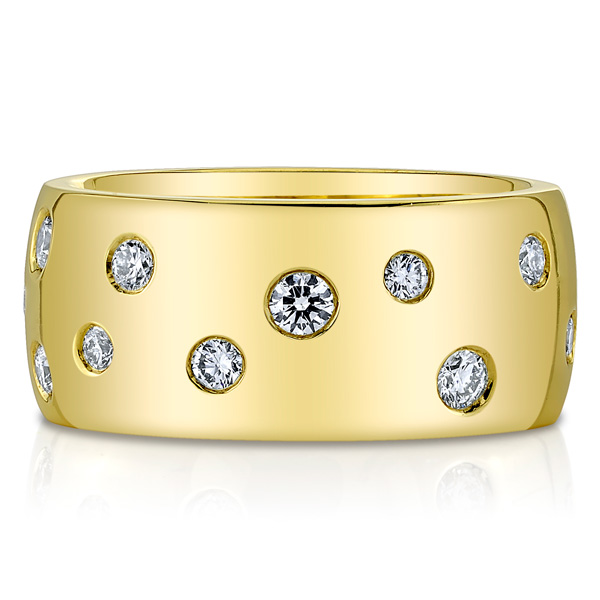
When I set out to write an article about green gold I really didn’t know where it would take me. Certainly no metallurgist, I had a bit of learning to do on the topic and quickly found that I’m not sure I collectively agree on what green gold is.
A conversation about green gold with a jewelry designer friend a few months back inspired me to explore it. My friend was considering setting a design in the metal and had questions about whether customers would be up for it—particularly at a higher price point.
My answer, eloquently, was, “huh?” Upon which I began googling and talking to other creators about it. Many (most?) of us have heard the term before, but does anyone really know what green gold is? And, if the industry is a little hazy on it, how much could the average customer actually know? No way is this mainstream, when rose gold barely registers in some shoppers’ jewelry knowledge banks.
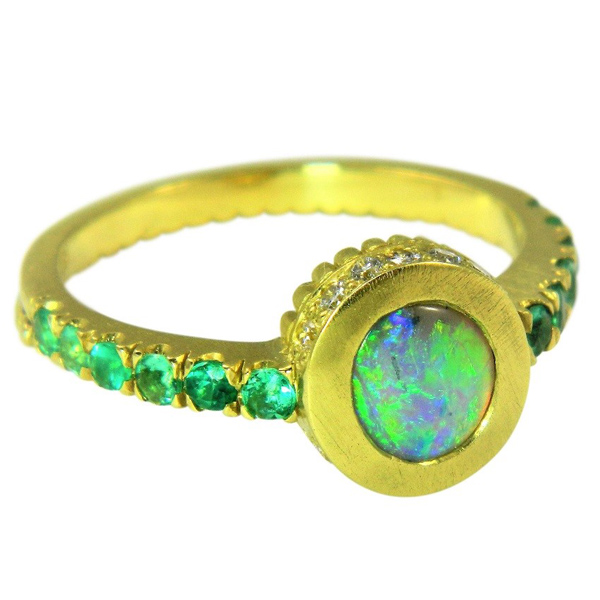
Look no further than the “green gold lady” herself, Alison Nagasue, who designs many of her collections in green gold. “All gold except for 24k is alloyed with different metals to attain different colors,” explains Nagasue. “With green gold the proportion or formula is different than yellow gold to achieve a greener tone distinguishable from yellow if you compare.
“To differentiate my collection from the onset, I created my designs in 18k green gold,” says Nagasue. “Since I traveled many times to Italy, I formed a love for 18k gold, especially green. I decided to adopt that characteristic for my collection. It has always been a topic I am asked about by retail customers, friends, and my clientele. If you look at my 18k green jewelry in the sun on a beach, it looks rich. If price is a consideration, I make some pieces in 14k green.”
In my search I also read a bit about electrum, the naturally occurring alloy of silver and gold. It’s rare to hear anyone actually use this term, though the material has serious history and is believed to have been used in coins as early as 600 B.C.
Perhaps that’s because it’s rare for jewelers to actually use electrum in its natural form. The relatively soft metal is often strengthened with other alloys or just created outright (most with a mix of 75% gold and 25% silver, but other variations are possible, altering the appearance slightly).
From a consumer point of view (from any point of view, really), green gold can be confusing. It’s greenish, but not what one might picture. More like the yellow gold you know and love, with a hint of green. To the untrained (or unobservant) eye, there might not be all that much of a difference.
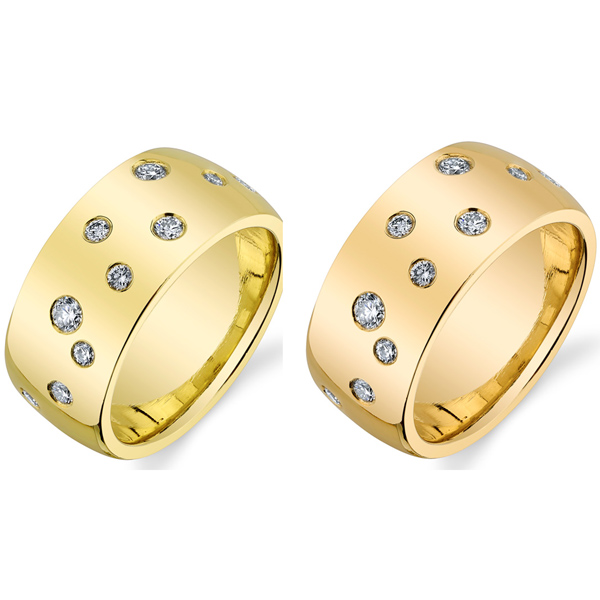
“My local jeweler here in San Antonio opened my eyes to it, and I love the subtlety of the color—it’s almost like a brighter electric yellow than the warmth you usually see in yellow gold,” says Nikki Swift, founder and designer of Nicole Mera. “My mind was blown. I have one piece I designed in 18k green gold [pictured above and at top], and I’m hoping to continue to make more.”
And with the demand for responsible jewelry, the term green easily translates to “environmentally friendly”—not to say that it is or isn’t—and this sort of meaning might not be what a jeweler is intending.
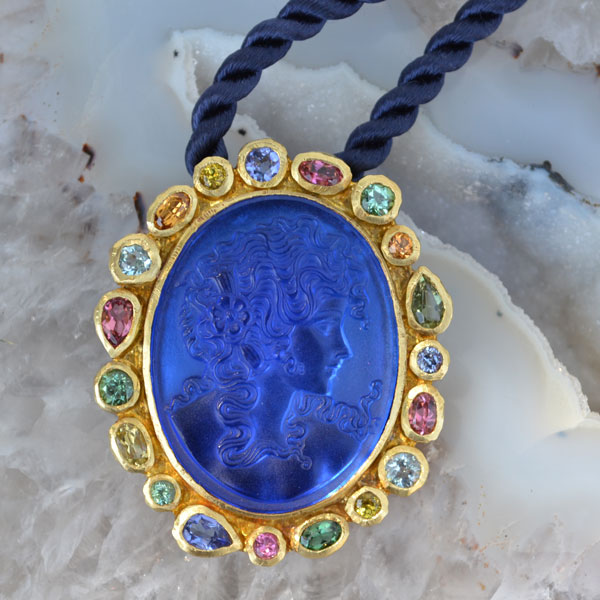
Green gold’s aesthetic benefits, however, are apparent. “I chose green gold for the project [pictured above] to complement the bright cobalt blue glass cameo,” says Elise Thompson, designer of Mejia Jewelry. “Green gold has a subtle color difference to yellow gold, slight green cast, and it’s an alternative to the traditional gold color. It’s nice to offer consumers something different that they don’t see very often, and I think green gold works well with colored gemstones in the blue/green color family.”
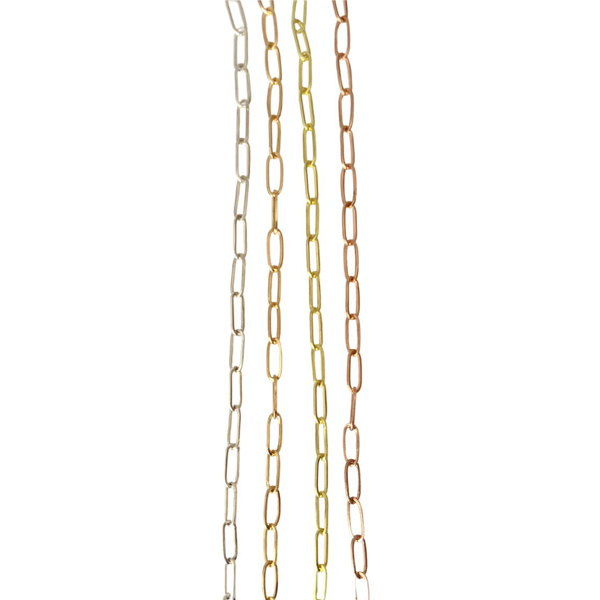
“For me, adding green gold to our repertoire has been so fun and rewarding. I enjoy soldering it, opposed to the other ‘color’ golds like white gold and rose gold,” says Emily Marquis of Emily Marquis Designs. “Our clients are excited by the option, it’s exotic. It looks beautiful with rubies, chalcedony, tourmalines….
“I also love the contrast of the electric green tone compared to yellow and rose. Using them alongside each other makes them seem so much more peachy and vibrant themselves. We’ve greatly enjoyed making two-tone chains and rings using green gold. It’s interesting to see it coming back holding its own, not merely a detail.”
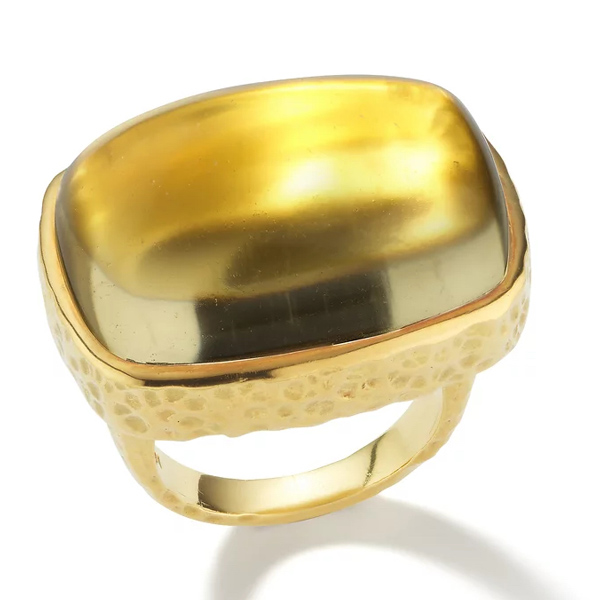
“I chose to use green gold primarily because it’s different and the sheen is pretty and unique,” says designer Karin Jamieson. “It doesn’t really stand out on its own, but when placed next to yellow gold you definitely can see the difference!”
And perhaps that’s enough: a subtle difference to stand out from the crowd, whether in a ring stack or as a major centerpiece. Today’s shopper wants to be different, and though not a glaringly obvious one, the choice of green gold has a certain something that feels fresh and a bit unexplored. Of course, once we know where to look for it, we might find it more abundant than previously thought.
Top: Speckled band in 18k green gold with 0.75 ct. t.w. diamonds, $4,695; Nicole Mera
- Subscribe to the JCK News Daily
- Subscribe to the JCK Special Report
- Follow JCK on Instagram: @jckmagazine
- Follow JCK on X: @jckmagazine
- Follow JCK on Facebook: @jckmagazine






